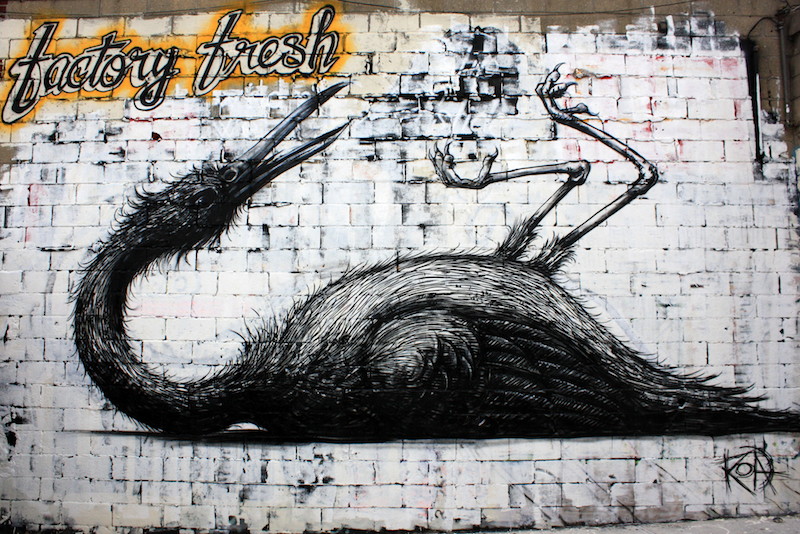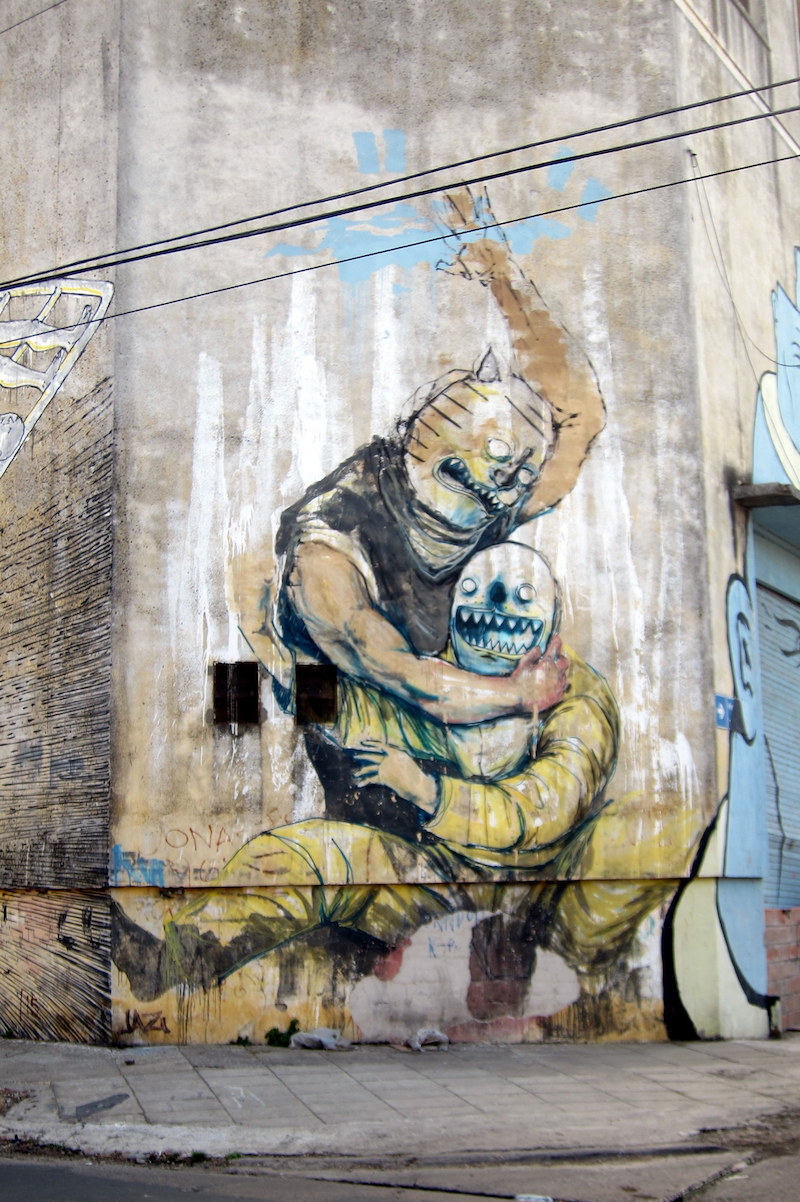I think one of the strongest criticisms of looking at and sharing street art and graffiti online is that the work is generally meant to be viewed in person and that the experience of viewing work through a photograph on a screen is not as good as being there. This point is brought up quite often, probably because it’s often true. Or, at least, the experiences is different. Although I’ve debated with Carlo McCormick on this topic and I do think there’s a lot that the internet has to offer, I will concede that what it offers is at least different and often not as good as what can be discovered when seeing a piece of street art on the street, particularly when a piece takes you by surprise.
McCormick told me this about looking at street art:
“I still believe in the primacy of experience… There’s something about seeing it… The most rupturous experiences I’ve had, the way I think it really works, is when it creates this situation that either makes you laugh at your surroundings or question your surroundings, and that’s, to me, the power that art in public places, which is unexpected and unasked for, can really have… especially as public spaces become such a consensus reality and such a homogenized and commodified space. These little ruptures, these little rifts, are important to me, and I’m not sure the web is serving that very well.”

Roa at Factory Fresh in Bushwick. Photo by Luna Park.
A great photograph by someone like Katherine Lorimer aka Luna Park of a piece by Roa can be powerful to see, even online, but what a viewer gets from that can be very different from actually seeing the work in person, and, most of the time, the artwork is more interesting in person than in all but the best photographs. Still, a photograph is better than nothing. I’d rather see a photo of a mural that Franco Fasoli aka Jaz has painted in Argentina than not see that mural at all. I’ve never been to Argentina and I’m not scheduled to visit anytime soon, so what’s wrong with looking at photos of the art there, fully aware that the photos are imperfect representations? Still, it is a concern that perhaps a generation of street art fans have basically grown up on seeing street art through photos rather than going outdoors, rounding a corner, and being surprised by something amazing. Nothing beats that feeling, yet there’s a sense that many street art fans don’t fully appreciate that experience. Viewing street art and graffiti through photos is certainly different from seeing it in person, and the experience of seeing a work in a photograph is usually not as good as seeing it in person, but if the option is between imperfect documentation and no documentation, I choose imperfect documentation. It’s just important to keep in mind the photo’s imperfections and the thrill of being surprised by street art and graffiti on the street.

Mural by Jaz in Buenos Aires, Argentina. Photo by Wally Gobetz.
Jaime Rojo and Steven Harrington, the duo behind the Brooklyn Street Art blog and also contributors to The Huffington Post, told me this when I asked about what might be lost or gained when people see street art through photographs rather than on the street:
“As good as photographic technology is, seeing the piece in real life is always a different experience, and there is value in understanding it in the original habitat. The art that is put on the streets often is contextual and placement is key. Like any other kind of plastic art, Street Art is best when one has the opportunity, luck or luxury to enjoy it in situ. The art itself may not gain anything by photographers taking photos of it. The artist, on the other hand, may.”